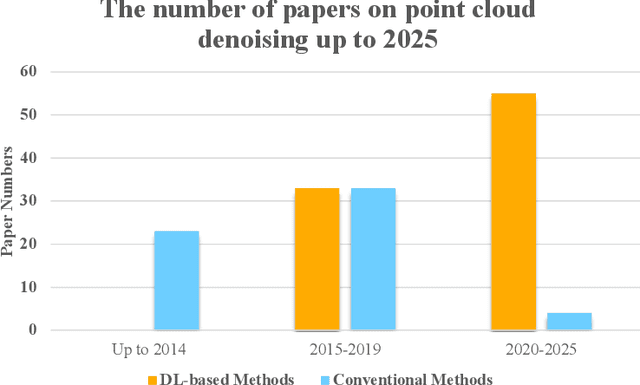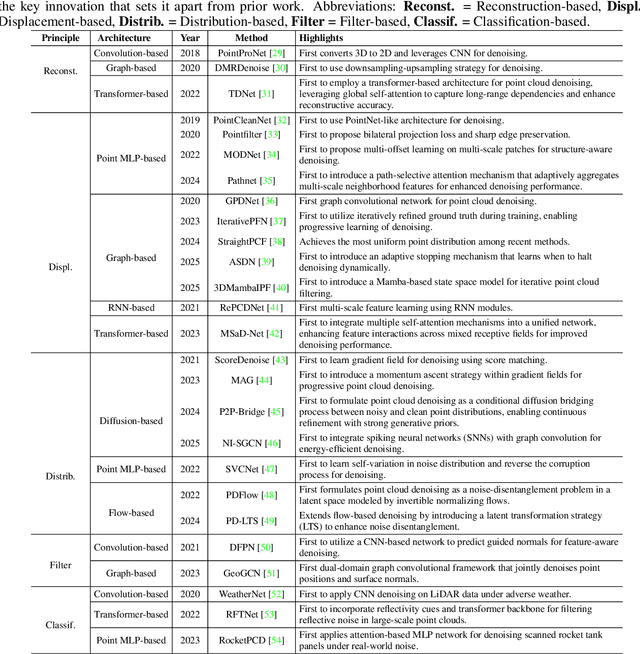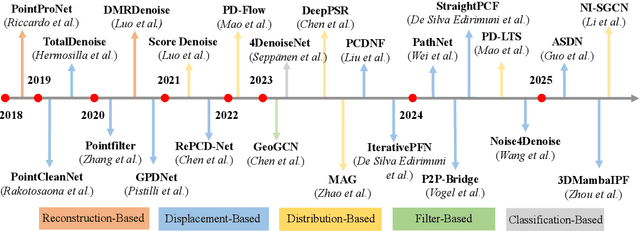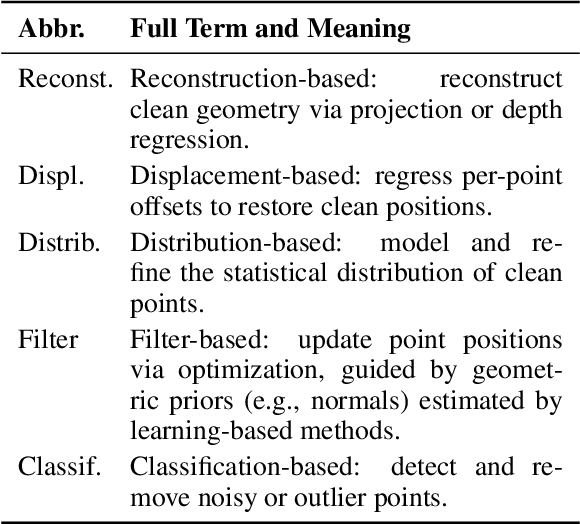Ben Fei
A Survey of Scientific Large Language Models: From Data Foundations to Agent Frontiers
Aug 28, 2025



Abstract:Scientific Large Language Models (Sci-LLMs) are transforming how knowledge is represented, integrated, and applied in scientific research, yet their progress is shaped by the complex nature of scientific data. This survey presents a comprehensive, data-centric synthesis that reframes the development of Sci-LLMs as a co-evolution between models and their underlying data substrate. We formulate a unified taxonomy of scientific data and a hierarchical model of scientific knowledge, emphasizing the multimodal, cross-scale, and domain-specific challenges that differentiate scientific corpora from general natural language processing datasets. We systematically review recent Sci-LLMs, from general-purpose foundations to specialized models across diverse scientific disciplines, alongside an extensive analysis of over 270 pre-/post-training datasets, showing why Sci-LLMs pose distinct demands -- heterogeneous, multi-scale, uncertainty-laden corpora that require representations preserving domain invariance and enabling cross-modal reasoning. On evaluation, we examine over 190 benchmark datasets and trace a shift from static exams toward process- and discovery-oriented assessments with advanced evaluation protocols. These data-centric analyses highlight persistent issues in scientific data development and discuss emerging solutions involving semi-automated annotation pipelines and expert validation. Finally, we outline a paradigm shift toward closed-loop systems where autonomous agents based on Sci-LLMs actively experiment, validate, and contribute to a living, evolving knowledge base. Collectively, this work provides a roadmap for building trustworthy, continually evolving artificial intelligence (AI) systems that function as a true partner in accelerating scientific discovery.
A Survey of Deep Learning-based Point Cloud Denoising
Aug 23, 2025



Abstract:Accurate 3D geometry acquisition is essential for a wide range of applications, such as computer graphics, autonomous driving, robotics, and augmented reality. However, raw point clouds acquired in real-world environments are often corrupted with noise due to various factors such as sensor, lighting, material, environment etc, which reduces geometric fidelity and degrades downstream performance. Point cloud denoising is a fundamental problem, aiming to recover clean point sets while preserving underlying structures. Classical optimization-based methods, guided by hand-crafted filters or geometric priors, have been extensively studied but struggle to handle diverse and complex noise patterns. Recent deep learning approaches leverage neural network architectures to learn distinctive representations and demonstrate strong outcomes, particularly on complex and large-scale point clouds. Provided these significant advances, this survey provides a comprehensive and up-to-date review of deep learning-based point cloud denoising methods up to August 2025. We organize the literature from two perspectives: (1) supervision level (supervised vs. unsupervised), and (2) modeling perspective, proposing a functional taxonomy that unifies diverse approaches by their denoising principles. We further analyze architectural trends both structurally and chronologically, establish a unified benchmark with consistent training settings, and evaluate methods in terms of denoising quality, surface fidelity, point distribution, and computational efficiency. Finally, we discuss open challenges and outline directions for future research in this rapidly evolving field.
EarthLink: A Self-Evolving AI Agent for Climate Science
Jul 24, 2025


Abstract:Modern Earth science is at an inflection point. The vast, fragmented, and complex nature of Earth system data, coupled with increasingly sophisticated analytical demands, creates a significant bottleneck for rapid scientific discovery. Here we introduce EarthLink, the first AI agent designed as an interactive copilot for Earth scientists. It automates the end-to-end research workflow, from planning and code generation to multi-scenario analysis. Unlike static diagnostic tools, EarthLink can learn from user interaction, continuously refining its capabilities through a dynamic feedback loop. We validated its performance on a number of core scientific tasks of climate change, ranging from model-observation comparisons to the diagnosis of complex phenomena. In a multi-expert evaluation, EarthLink produced scientifically sound analyses and demonstrated an analytical competency that was rated as comparable to specific aspects of a human junior researcher's workflow. Additionally, its transparent, auditable workflows and natural language interface empower scientists to shift from laborious manual execution to strategic oversight and hypothesis generation. EarthLink marks a pivotal step towards an efficient, trustworthy, and collaborative paradigm for Earth system research in an era of accelerating global change. The system is accessible at our website https://earthlink.intern-ai.org.cn.
Multi-modal Multi-task Pre-training for Improved Point Cloud Understanding
Jul 23, 2025Abstract:Recent advances in multi-modal pre-training methods have shown promising effectiveness in learning 3D representations by aligning multi-modal features between 3D shapes and their corresponding 2D counterparts. However, existing multi-modal pre-training frameworks primarily rely on a single pre-training task to gather multi-modal data in 3D applications. This limitation prevents the models from obtaining the abundant information provided by other relevant tasks, which can hinder their performance in downstream tasks, particularly in complex and diverse domains. In order to tackle this issue, we propose MMPT, a Multi-modal Multi-task Pre-training framework designed to enhance point cloud understanding. Specifically, three pre-training tasks are devised: (i) Token-level reconstruction (TLR) aims to recover masked point tokens, endowing the model with representative learning abilities. (ii) Point-level reconstruction (PLR) is integrated to predict the masked point positions directly, and the reconstructed point cloud can be considered as a transformed point cloud used in the subsequent task. (iii) Multi-modal contrastive learning (MCL) combines feature correspondences within and across modalities, thus assembling a rich learning signal from both 3D point cloud and 2D image modalities in a self-supervised manner. Moreover, this framework operates without requiring any 3D annotations, making it scalable for use with large datasets. The trained encoder can be effectively transferred to various downstream tasks. To demonstrate its effectiveness, we evaluated its performance compared to state-of-the-art methods in various discriminant and generative applications under widely-used benchmarks.
Reflections Unlock: Geometry-Aware Reflection Disentanglement in 3D Gaussian Splatting for Photorealistic Scenes Rendering
Jul 08, 2025Abstract:Accurately rendering scenes with reflective surfaces remains a significant challenge in novel view synthesis, as existing methods like Neural Radiance Fields (NeRF) and 3D Gaussian Splatting (3DGS) often misinterpret reflections as physical geometry, resulting in degraded reconstructions. Previous methods rely on incomplete and non-generalizable geometric constraints, leading to misalignment between the positions of Gaussian splats and the actual scene geometry. When dealing with real-world scenes containing complex geometry, the accumulation of Gaussians further exacerbates surface artifacts and results in blurred reconstructions. To address these limitations, in this work, we propose Ref-Unlock, a novel geometry-aware reflection modeling framework based on 3D Gaussian Splatting, which explicitly disentangles transmitted and reflected components to better capture complex reflections and enhance geometric consistency in real-world scenes. Our approach employs a dual-branch representation with high-order spherical harmonics to capture high-frequency reflective details, alongside a reflection removal module providing pseudo reflection-free supervision to guide clean decomposition. Additionally, we incorporate pseudo-depth maps and a geometry-aware bilateral smoothness constraint to enhance 3D geometric consistency and stability in decomposition. Extensive experiments demonstrate that Ref-Unlock significantly outperforms classical GS-based reflection methods and achieves competitive results with NeRF-based models, while enabling flexible vision foundation models (VFMs) driven reflection editing. Our method thus offers an efficient and generalizable solution for realistic rendering of reflective scenes. Our code is available at https://ref-unlock.github.io/.
ReconMOST: Multi-Layer Sea Temperature Reconstruction with Observations-Guided Diffusion
Jun 12, 2025Abstract:Accurate reconstruction of ocean is essential for reflecting global climate dynamics and supporting marine meteorological research. Conventional methods face challenges due to sparse data, algorithmic complexity, and high computational costs, while increasing usage of machine learning (ML) method remains limited to reconstruction problems at the sea surface and local regions, struggling with issues like cloud occlusion. To address these limitations, this paper proposes ReconMOST, a data-driven guided diffusion model framework for multi-layer sea temperature reconstruction. Specifically, we first pre-train an unconditional diffusion model using a large collection of historical numerical simulation data, enabling the model to attain physically consistent distribution patterns of ocean temperature fields. During the generation phase, sparse yet high-accuracy in-situ observational data are utilized as guidance points for the reverse diffusion process, generating accurate reconstruction results. Importantly, in regions lacking direct observational data, the physically consistent spatial distribution patterns learned during pre-training enable implicitly guided and physically plausible reconstructions. Our method extends ML-based SST reconstruction to a global, multi-layer setting, handling over 92.5% missing data while maintaining reconstruction accuracy, spatial resolution, and superior generalization capability. We pre-train our model on CMIP6 numerical simulation data and conduct guided reconstruction experiments on CMIP6 and EN4 analysis data. The results of mean squared error (MSE) values achieve 0.049 on guidance, 0.680 on reconstruction, and 0.633 on total, respectively, demonstrating the effectiveness and robustness of the proposed framework. Our source code is available at https://github.com/norsheep/ReconMOST.
Scientists' First Exam: Probing Cognitive Abilities of MLLM via Perception, Understanding, and Reasoning
Jun 12, 2025Abstract:Scientific discoveries increasingly rely on complex multimodal reasoning based on information-intensive scientific data and domain-specific expertise. Empowered by expert-level scientific benchmarks, scientific Multimodal Large Language Models (MLLMs) hold the potential to significantly enhance this discovery process in realistic workflows. However, current scientific benchmarks mostly focus on evaluating the knowledge understanding capabilities of MLLMs, leading to an inadequate assessment of their perception and reasoning abilities. To address this gap, we present the Scientists' First Exam (SFE) benchmark, designed to evaluate the scientific cognitive capacities of MLLMs through three interconnected levels: scientific signal perception, scientific attribute understanding, scientific comparative reasoning. Specifically, SFE comprises 830 expert-verified VQA pairs across three question types, spanning 66 multimodal tasks across five high-value disciplines. Extensive experiments reveal that current state-of-the-art GPT-o3 and InternVL-3 achieve only 34.08% and 26.52% on SFE, highlighting significant room for MLLMs to improve in scientific realms. We hope the insights obtained in SFE will facilitate further developments in AI-enhanced scientific discoveries.
Gaussian2Scene: 3D Scene Representation Learning via Self-supervised Learning with 3D Gaussian Splatting
Jun 11, 2025Abstract:Self-supervised learning (SSL) for point cloud pre-training has become a cornerstone for many 3D vision tasks, enabling effective learning from large-scale unannotated data. At the scene level, existing SSL methods often incorporate volume rendering into the pre-training framework, using RGB-D images as reconstruction signals to facilitate cross-modal learning. This strategy promotes alignment between 2D and 3D modalities and enables the model to benefit from rich visual cues in the RGB-D inputs. However, these approaches are limited by their reliance on implicit scene representations and high memory demands. Furthermore, since their reconstruction objectives are applied only in 2D space, they often fail to capture underlying 3D geometric structures. To address these challenges, we propose Gaussian2Scene, a novel scene-level SSL framework that leverages the efficiency and explicit nature of 3D Gaussian Splatting (3DGS) for pre-training. The use of 3DGS not only alleviates the computational burden associated with volume rendering but also supports direct 3D scene reconstruction, thereby enhancing the geometric understanding of the backbone network. Our approach follows a progressive two-stage training strategy. In the first stage, a dual-branch masked autoencoder learns both 2D and 3D scene representations. In the second stage, we initialize training with reconstructed point clouds and further supervise learning using the geometric locations of Gaussian primitives and rendered RGB images. This process reinforces both geometric and cross-modal learning. We demonstrate the effectiveness of Gaussian2Scene across several downstream 3D object detection tasks, showing consistent improvements over existing pre-training methods.
OmniEarth-Bench: Towards Holistic Evaluation of Earth's Six Spheres and Cross-Spheres Interactions with Multimodal Observational Earth Data
May 29, 2025Abstract:Existing benchmarks for Earth science multimodal learning exhibit critical limitations in systematic coverage of geosystem components and cross-sphere interactions, often constrained to isolated subsystems (only in Human-activities sphere or atmosphere) with limited evaluation dimensions (less than 16 tasks). To address these gaps, we introduce OmniEarth-Bench, the first comprehensive multimodal benchmark spanning all six Earth science spheres (atmosphere, lithosphere, Oceansphere, cryosphere, biosphere and Human-activities sphere) and cross-spheres with one hundred expert-curated evaluation dimensions. Leveraging observational data from satellite sensors and in-situ measurements, OmniEarth-Bench integrates 29,779 annotations across four tiers: perception, general reasoning, scientific knowledge reasoning and chain-of-thought (CoT) reasoning. This involves the efforts of 2-5 experts per sphere to establish authoritative evaluation dimensions and curate relevant observational datasets, 40 crowd-sourcing annotators to assist experts for annotations, and finally, OmniEarth-Bench is validated via hybrid expert-crowd workflows to reduce label ambiguity. Experiments on 9 state-of-the-art MLLMs reveal that even the most advanced models struggle with our benchmarks, where none of them reach 35\% accuracy. Especially, in some cross-spheres tasks, the performance of leading models like GPT-4o drops to 0.0\%. OmniEarth-Bench sets a new standard for geosystem-aware AI, advancing both scientific discovery and practical applications in environmental monitoring and disaster prediction. The dataset, source code, and trained models were released.
Align-DA: Align Score-based Atmospheric Data Assimilation with Multiple Preferences
May 28, 2025Abstract:Data assimilation (DA) aims to estimate the full state of a dynamical system by combining partial and noisy observations with a prior model forecast, commonly referred to as the background. In atmospheric applications, this problem is fundamentally ill-posed due to the sparsity of observations relative to the high-dimensional state space. Traditional methods address this challenge by simplifying background priors to regularize the solution, which are empirical and require continual tuning for application. Inspired by alignment techniques in text-to-image diffusion models, we propose Align-DA, which formulates DA as a generative process and uses reward signals to guide background priors, replacing manual tuning with data-driven alignment. Specifically, we train a score-based model in the latent space to approximate the background-conditioned prior, and align it using three complementary reward signals for DA: (1) assimilation accuracy, (2) forecast skill initialized from the assimilated state, and (3) physical adherence of the analysis fields. Experiments with multiple reward signals demonstrate consistent improvements in analysis quality across different evaluation metrics and observation-guidance strategies. These results show that preference alignment, implemented as a soft constraint, can automatically adapt complex background priors tailored to DA, offering a promising new direction for advancing the field.
 Add to Chrome
Add to Chrome Add to Firefox
Add to Firefox Add to Edge
Add to Edge